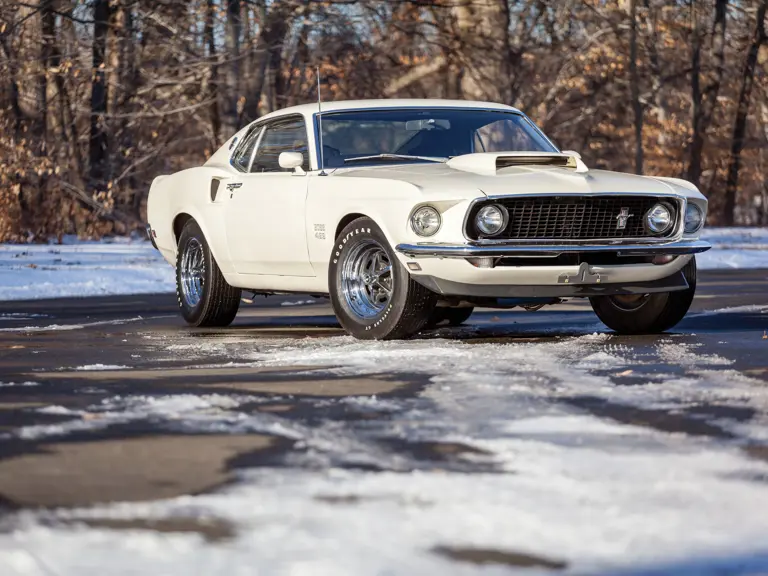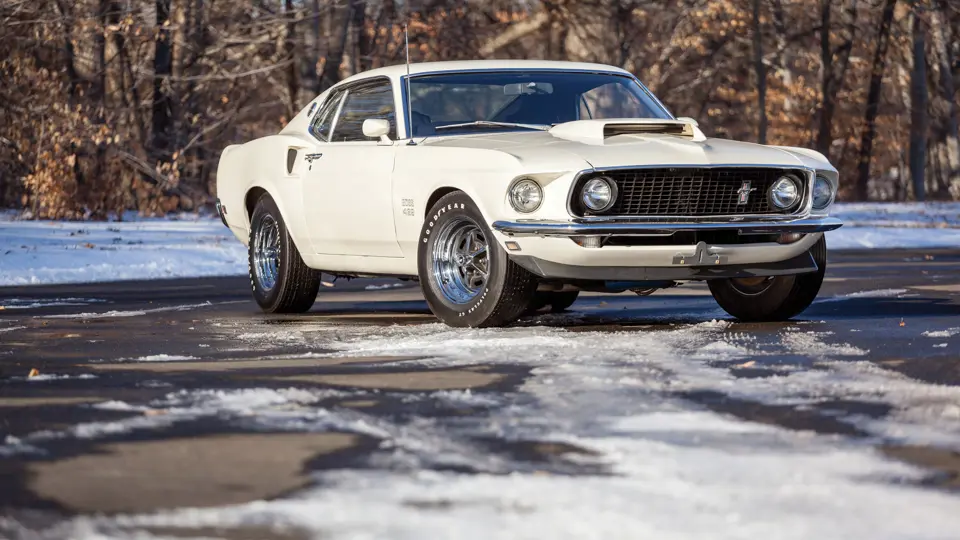 | Fort Lauderdale, Florida
| Fort Lauderdale, Florida
During the mid-1960s, the non-competition pact adopted by the Big Three nearly a decade earlier had fallen to shreds, with increasingly open factory-based support provided to supposedly independent racers. Ford, in particular, faced stiff competition from Chrysler in NASCAR competition. The Blue Oval camp required a new engine, but NASCAR rules demanded that at least 500 cars be equipped with the engine and be made available to the public.
Ford developed a new 429-cubic inch V-8 with all-new, free-flowing cylinder heads, an aluminum high-rise intake manifold, a 735-cfm Holley carburetor, 11:1 compression, header-style exhaust manifolds, and a beefy four-bolt main block, conservatively rated at 375 horsepower.
When dropped into the Mustang, at the direction of “Bunkie” Knudsen, it created the Boss 429. To handle the power, the stout “Toploader” four-speed manual transmission and a 3.91:1 Traction-Lok rear axle were mandatory options. Other features included an engine oil cooler, a trunk-mounted battery with a special vent cap system, a competition suspension with front and rear anti-roll bars, power front disc brakes, and wide F60x15 tires. The production process required numerous modifications to accommodate the new engine, including cutting and relocating the shock towers. To alleviate the in-house production burden, Ford had the cars converted at Kar Kraft, of Brighton, Michigan.
Once in Brighton, the cars were changed over to Boss 429 specification, utilizing, in the earliest cars, the 820-S NASCAR-specification version of the 429 V-8, an engine fully unique to the Boss 429 and the same as used in Ford’s stock cars. At just under $5,000, the Boss 429 was the priciest non-Shelby Mustang to date, and it was available in very limited numbers, with 859 produced for the 1969 model year.
Other equipment on the Boss 429 included power steering, a beefed-up competition suspension, staggered rear shocks under a unique rear sway bar (an American car first), and a four-speed close-ratio transmission with a 3.91:1 nodular Track-Lok rear axle. These were, essentially, NASCAR cars in street-legal trim, which was exactly the point. The Hemi ‘Cuda was just an engine that was dropped into a car, while the Boss 429 was custom-built and unique.
This particular car (KK 1785) is a very original example that has received one repaint in Wimbledon White with an interior décor group black interior that features bucket “comfortweave” high-back bucket seats, and center console. The interior and undercarriage are unrestored and the mileage registers as 33,960 miles. Chrome Magnum 500 wheels, Goodyear Polyglas GT tires, spoilers, hood scoop and twin racing mirrors help convey the fierce nature of this exceptional car.
The Boss 429 had its concours preparation overseen by Ed Meyer, who is the head judge of the Shelby American Automobile Club, with over 30 years of experience with these cars. Mr. Meyer certifies this as an outstanding original example Boss. This outstanding first year Boss 429 is naturally accompanied with a Marti Report, various pieces of original documentation, and it has consistently scored highly in three national Shelby conventions concours gatherings.





